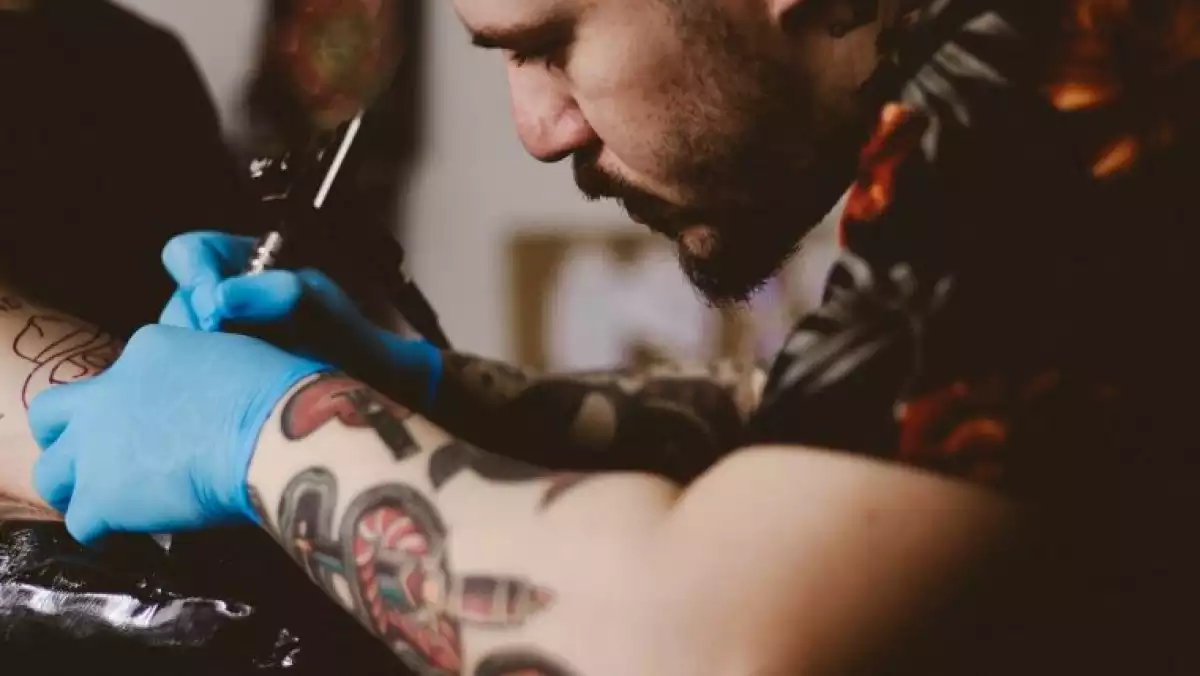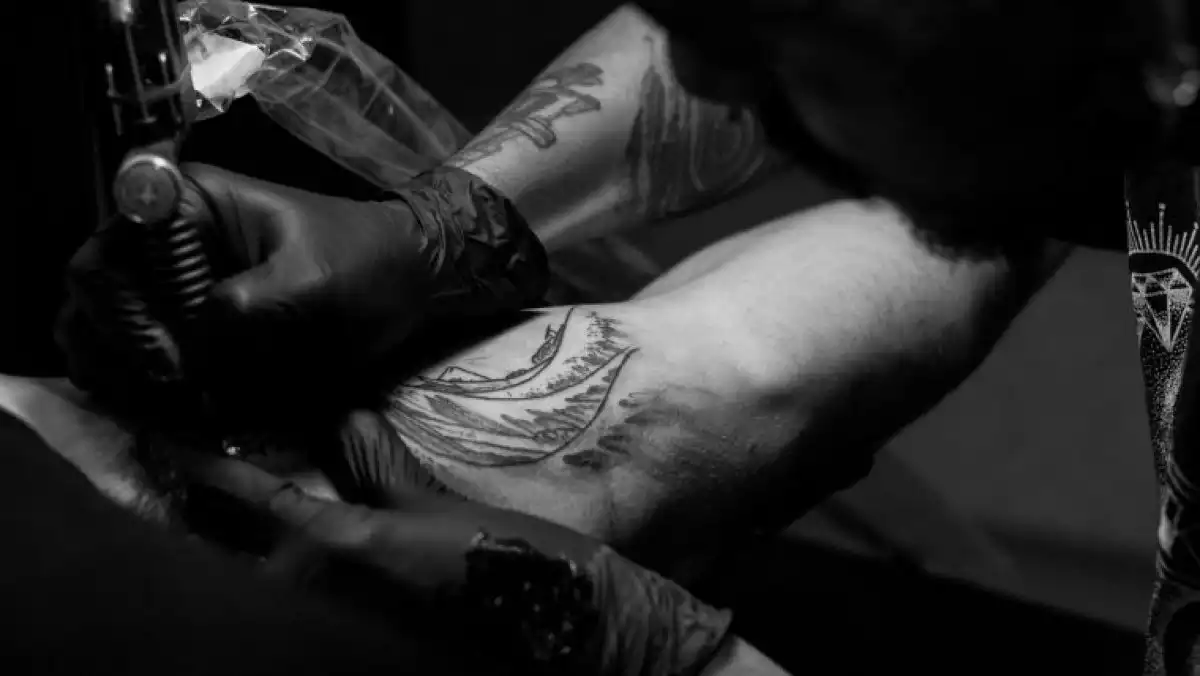
Tattoo aftercare is a necessary procedure even after getting a small tattoo. There are different creams and ointments available to help moisturize the skin or heal a tattoo, in case of an infection.
We will examine all the essential steps in tattoo aftercare: from the initial guidelines, the risks attached in cases of infection and how to treat them.
The importance of tattoo aftercare
Tattoos are sometimes painful experiences, but if you know how to properly take care of a tattoo your chances of endangering your health are minimal.
The risks that are associated with this type of body modification are completely manageable if you follow the instructions your tattoo artist has given you. A crucial first step would be to find a reliable tattoo shop, that uses sterilized equipment and follows the hygiene standards of the country you are in.
Risk of infection tends to be the most common issue associated with tattoos, and the severity of the skin condition depends on several factors. In the following list, we mention a few of the symptoms that might indicate an infected tattoo:
Bad odor
Suppuration (the process of pus forming)
Intense pain
Fever
Prolonged swelling
Prolonged skin redness
If you notice any of these changes, we recommend you see your tattoo artist or a doctor so you can seek medical attention as soon as possible and avoid any consequences.
Risks of an infected tattoo
As mentioned earlier, one of the most common problems when getting tattooed is the risk of getting an infection. Some of the symptoms associated with infections are more obvious than others, such as inflammation of the tattooed area or suppuration.
There are also milder symptoms that could indicate an infection, either with HIV or Hepatitis C, which are two of the most common viral agents capable of being transmitted through blood transfusions.
These infections could only happen in extremely poor hygiene conditions when almost no adequate procedure has been followed.
People getting tattooed could also develop allergic reactions due to the chemical pigments found in ink, such as iron oxides, mercury, chrome, cadmium, cobalt, and other synthetic organic dyes.
When the skin becomes infected because of improper tattoo aftercare, the treatment usually involves applying a cold compress and antibiotic ointments to the affected area as well as taking an oral antibiotic.

How to take care of a fresh tattoo - Instructions
To make sure your tattoo heals appropriately you need to follow your tattoo artists' instructions and always keep in mind that tattoos are open wounds prone to infections. We will have a look at the most important steps in tattoo aftercare so that you avoid unwanted skin conditions or tattoo discoloration.
1. Initial advice
There are various methods of tattoo aftercare available; however, the type of tattoo that you got, the size, and whether it's color or not are essential factors in the healing process. On average, it usually takes two weeks before you can go swimming, or take a bath (it takes almost six months for complete healing) and the better you take care of your tattoo and the skin around it, the more beautiful it will look.
2. Wash the tattooed area well
Right after you get tattooed, you have to wait for 2-5 hours, depending on what your artist advises you, and then you will have to start tending to your tattoo. The first, and most important thing is to wash your hands thoroughly before you wash your tattoo with cold water and antibacterial soap. Gently wash the area (using only your hands) until the skin feels smooth and clean.
3. Keep the skin dry
After you've washed the area, it's now time to dry it. Use a clean, cotton towel to dab the skin until it dries and remember not to scrub as it might affect the tattoo.
4. Apply tattoo creams and ointments
Finally, once your tattoo is dry you need to apply lotion all over the predetermined area - Bepanthol is usually the first cream artists recommend. Apply a thin coat on the tattoo and let dry as much as possible before coming in contact with clothes.
Depending on the size and the special aftercare routine, you might have to cover your tattoo with a special bandage before you put clothes on, so you minimize rubbing.
Scar healing creams should be applied 2-3 times a day, approximately every 7-8 hours, especially in the first week after getting the tattoo.
5. After you get tattooed
It's important not to pick the scabs or scratch the tattoo, as well as keeping in mind that a certain degree of swelling is to be expected from a superficial wound. However, if the itching and inflammation don't subside after a week you might need to see your tattoo artist again. Once healed, apply moisturizing creams to keep the skin hydrated or solar protection creams if you're going to be exposed to sunlight. Nowadays, there are special ointments designed to keep tattoos looking as fresh as possible for as long as possible.

Creams and ointments: Bepanthol, Mupirocin, and Nivea
There are many tattoo creams available on the market, each with a different purpose depending on where you are in the healing stage.
We have chosen three of the most used ointments in tattoo aftercare:
1. Bepanthol (antiseptic cream)
Bepanthol or Bepanthen is a protective antiseptic cream that aids the healing and regeneration of skin. It contains dexpanthenol, a component of the B complex vitamins, that protects and hydrates the epithelium.
This cream can be used on all types of skin irritations or wounds. You can find it in local pharmacies as well as online, on portals such as Amazon.
2. Nivea (moisturizing cream)
The blue tin Nivea cream is by now a classic regarding skin moisturizing. After healing, apply a thin coat and let absorb - Nivea is an intensive moisturizing cream suitable for all skin types.
One of the incredible ingredients found in the Nivea cream is called Eucerit, and it's responsible for keeping the skin soft and supple. You can find the cream in any pharmacy or supermarket at a convenient price.
3. Mupirocin topical (antibiotic cream)
Mupirocin topical (for use on the skin) is an antibiotic cream prescribed by doctors to treat infected tattoos. Unlike its less potent cousin Bepanthen, that only works as an antiseptic, this antibiotic cream kills all bacteria and heals the infection.
References:
Fallon, L. F. (2006). Piercing and Tattoos. In K. Krapp & J. Wilson (Eds.), The Gale Encyclopedia of Children's Health: Infancy through Adolescence (Vol. 3, pp. 1446-1449). Detroit, MI: Gale.
